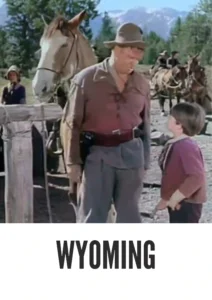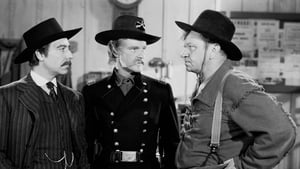Video Sources 0 Views

Download Wyoming (1940) Colorized HD | William Boyd | Western Adventure Classic
Synopsis
Cowboys, Cattle, and Courage: Wyoming (1940) in Stunning Color

Experience the Wild West like never before with Wyoming, a captivating Western adventure from 1940, now beautifully colorized for a modern audience. Starring William Boyd as Hopalong Cassidy, this film delivers a classic tale of cowboys, cattle drives, and frontier justice. Perfect for fans of classic Westerns and those seeking a nostalgic trip to the golden age of Hollywood, this HD download brings a timeless story to life with stunning visuals. Also known as The Way of the West and Bad Man of Wyoming.
Wyoming Storyline: A Frontier Tale of Justice and Adventure
Wyoming follows the adventures of Hopalong Cassidy (William Boyd) as he navigates the rugged terrain and challenges of the American West.In this thrilling installment, Hopalong and his companions find themselves embroiled in a conflict between cattle ranchers and homesteaders. As tensions escalate, Hopalong must use his wit, courage, and skill with a six-shooter to maintain peace and ensure justice prevails. Along the way, he encounters treacherous outlaws, loyal friends, and a host of colorful characters who embody the spirit of the Old West. With its sweeping landscapes, action-packed sequences, and heartwarming moments, Wyoming is a classic Western that captures the essence of frontier life.
Movie Cast
The film features a talented cast of actors who bring this Western tale to life:
- William Boyd as Hopalong Cassidy
- Russell Hayden as Lucky Jenkins
- Andy Clyde as California Carlson
- Forrest Taylor as Jim Rawley
- June Harrison as Lin Whitlock
Movie Genre
Wyoming falls squarely into the Western genre, offering a mix of action, adventure, and morality that is characteristic of classic films from this era. Its themes of justice, courage, and the triumph of good over evil make it a timeless and engaging film.
Historical Context: The Golden Age of Westerns
Released in 1940, Wyoming exemplifies the popularity of Westerns during Hollywood’s Golden Age. The film was produced during a period when audiences were captivated by stories of the American frontier, and Westerns like Wyoming offered an idealized vision of cowboys, pioneers, and the rugged landscapes of the West. While Wyoming may not be as widely known as some of the genre’s biggest hits, it remains a valuable example of classic Western filmmaking and a testament to the enduring appeal of the genre.
Colorization Details
This colorized version of Wyoming has been meticulously restored using modern digital techniques, enhancing the visual appeal while preserving the film’s original charm and atmosphere. The colorization process involved carefully analyzing the grayscale tones of the original black and white footage and assigning appropriate colors to each scene. While the specific software used remains proprietary, the techniques employed included advanced algorithms for color palette selection and image enhancement. This painstaking process brings new life to the characters and settings, making the story even more engaging for modern audiences. While some may debate the merits of colorizing classic films, it introduces these films to a broader audience, ensuring their legacy for future generations.
Technical Details
- Director: Richard Thorpe
- Screenplay: Jack Jevne, Hugo Butler, Robert T. Shannon
- Story: Harold Bell Wright
- Cinematography: Clyde De Vinna, Allen M. Davey
- Edited by: Elmo Veron
- Production Company: Metro-Goldwyn-Mayer
- Distributed by: Metro-Goldwyn-Mayer
- Runtime: 89 minutes
Technical Specifications
- Download Format: MP4
- Resolution: HD (1080p)
- Compatibility: Compatible with most devices, including smartphones, tablets, computers, and smart TVs.
Reviews and Critical Reception
Wyoming (1940) is a classic Western that showcases the genre’s timeless themes and tropes. While it may not be considered a groundbreaking film, it remains a solid and entertaining example of Hollywood’s Golden Age. As a nostalgic trip to the American frontier, Wyoming offers a satisfying viewing experience for fans of classic Westerns.
FAQs
- Q: What is Wyoming about?
- A: Wyoming is a Western adventure about Hopalong Cassidy and his companions navigating the challenges of the American West.
- Q: Is Wyoming (1940) a well-known Western film?
- A: Wyoming is a classic Western from Hollywood’s Golden Age, offering a nostalgic trip to the American frontier.
- Q: Is this version of Wyoming colorized?
- A: Yes, this version has been professionally colorized to enhance the viewing experience.
- Q: What makes Wyoming interesting for Western fans?
- A: Wyoming offers a classic Western tale of cowboys, cattle drives, and frontier justice.
- Q: What is the download format?
- A: The download format is MP4, which is compatible with most devices.
- Q: What resolution is the download?
- A: The resolution is HD (1080p), providing a high-quality viewing experience.
Download Now in HD!
Watch Wyoming Today!











